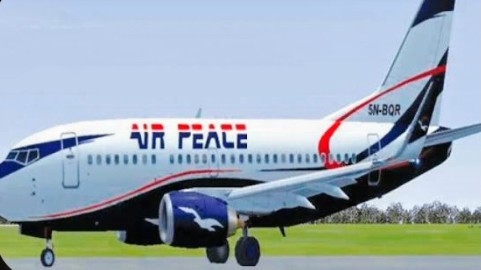NSIB Reveals Findings of Air Peace Incident of Boeing 737-500 overshot runway at Port Harcourt.
The Nigerian Safety Investigation Bureau (NSIB) has released its findings on the July 13th Air Peace incident, where a Boeing 737-500 overshot the runway at Port Harcourt International Airport, raising fresh concerns over airline safety standards in Nigeria.
The flight had departed Lagos with 96 passengers and seven crew members, and weather conditions at landing were reportedly clear.
Investigators revealed the aircraft touched down almost three-quarters of the way into the 3,000-meter runway, leaving no room for safe deceleration. The plane eventually skidded onto the grass verge, but fortunately, all passengers disembarked without injury.
A disturbing discovery emerged during the investigation: both pilots tested positive for alcohol, while a flight attendant tested positive for cannabis. The Bureau described this as a serious breach of aviation discipline, professionalism, and safety culture.
Further analysis revealed that the first officer had recommended a go-around when it became clear that the approach was unstable. However, the 64-year-old captain, with over 10,000 flight hours, overruled him and insisted on landing. Aviation experts warn that such authority gaps in the cockpit are dangerous and can prevent the implementation of critical safety decisions.
Following the incident, the NSIB directed Air Peace to:
– Strengthen crew fitness checks to prevent alcohol or drug impairment.
– Reinforce training on go-around procedures, emphasizing that abandoning an unstable approach is vital for safe landings.
Though no lives were lost, the case highlights the non-negotiable standards of aviation safety, reminding both airlines and regulators that alcohol, drugs, and flying can never mix.
“Flying demands absolute discipline. There can be no compromise when safety is at stake,” the Bureau stressed.
This development comes amid increased scrutiny of Nigerian carriers, as stakeholders call for stricter enforcement of safety protocols across the aviation sector

















